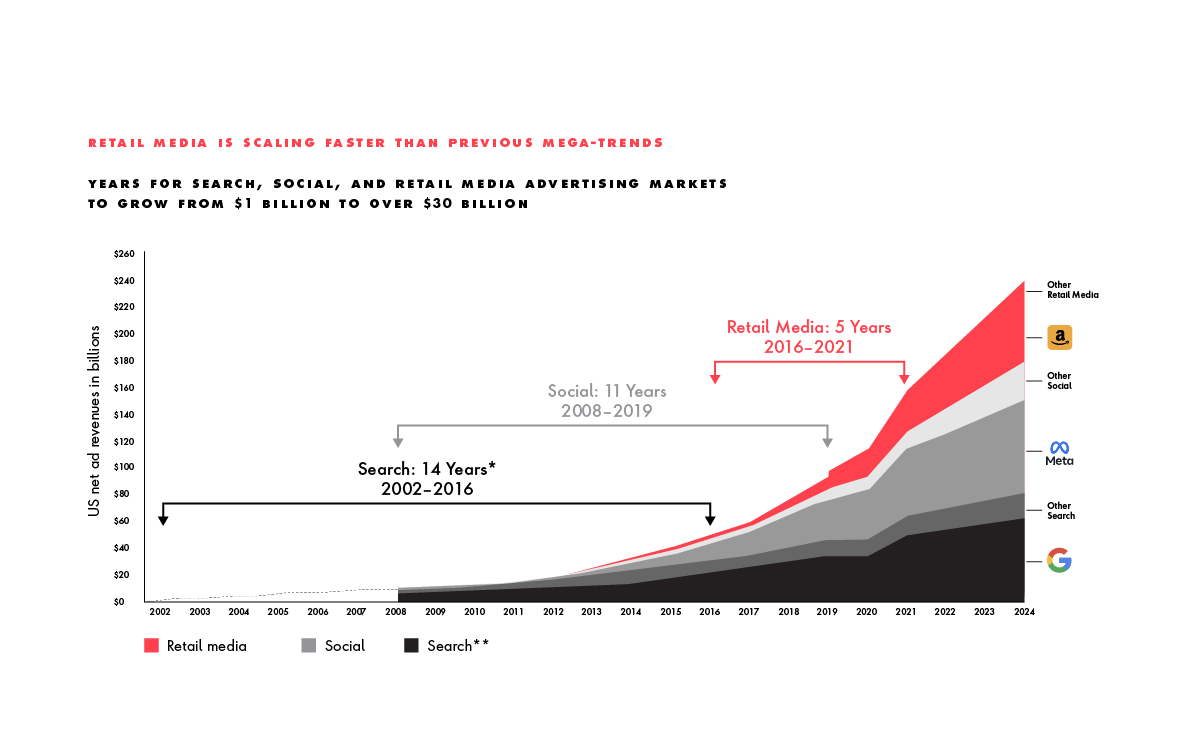3 Strategies to Utilize Retail Media Networks for Profitability
The retail industry is transforming from an industry powered by transactions to an industry that runs on data-powered retail media. In fact, some retailers say that their marketplace fees and ad sales will become more profitable than sales of merchandise within the next five years alone.
This is all part of a continued trajectory of the fastest-growing digital ad format in history. Retail media has reached $30 billion in revenue faster than both search and social, according to Luma Partners, and continues to fill a market need for consumer packed goods and branded manufacturers. Reuters projects that by 2028 revenue from retail media networks will account for 15.4 percent of all revenue from ads, eclipsing television as an advertising platform. Companies that use RMNs are seeing maximum ROI from untapped customer data and reaching highly engaged audiences.













